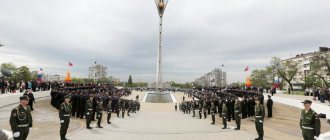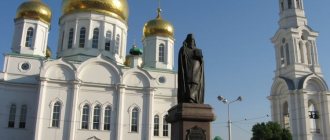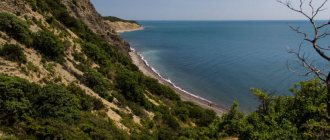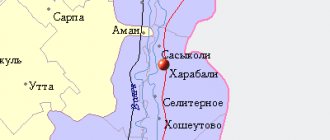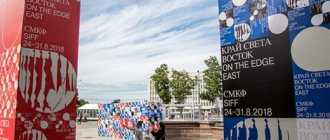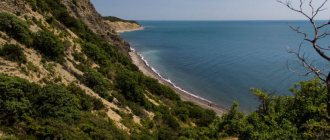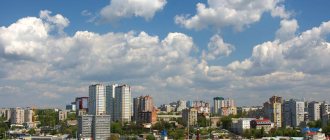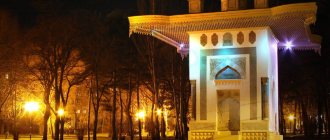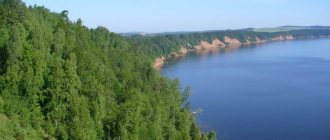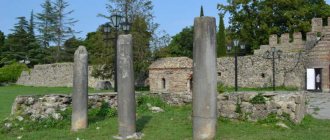There are quite a lot of attractions in Rostov-on-Don. But in this note, I want to share unusual, modern and creative places in the southern capital.
Returning to my native Rostov a couple of times a year, every time I find something new in my appearance. It’s sad here in winter and autumn, but summer lasts almost half a year, so the city begins to play with completely different colors. During the 10 years of my absence, the city has changed, new places, galleries and theaters dedicated to contemporary art and culture have appeared. And this cannot but rejoice.
This time, during my May trip to Rostov, I managed to collect quite a lot of interesting information about informal attractions and take cool photos.
It all started with an innocent question about where to go in Rostov. As always, friends innocently shrugged their shoulders and named banal places: Teatralnaya Square, Pushkinsky Boulevard, Embankment. My soul felt that something interesting was bound to appear! And there was such a little man who knows everything, everything about informal attractions. Thanks to my long-time friend and neighbor Zhanna, I was able to draw up a map of interesting and unusual places that are not typical for Rostov. Who, if not the founder of the contact improvisation studio in Rostov, could select such interesting objects? I admit, it was only in Rostov that I found out what it was. But more on that next time.
The list of informal attractions includes galleries and theaters, places for unusual photo sessions, antique cafes, graffiti and much more.
So, 7 creative places in Rostov:
- Creative space in Rostov
- Shanti's shop
- Backstage of the SFU library on the street. Pushkinskaya, the best place for photo shoots
- The house where Sigmund Freud's student lived on Pushkinskaya
- Gallery 16th line and summer veranda
- Theater "18+"
- Anticafe in Rostov: Gallery Tsiferblat
The main attractions of Rostov-on-Don - TOP-5
The almost 300-year history of the city, bearing the title of Hero, is full of bright events. Significant sights are associated with them, by which Rostov-on-Don is recognized even by those people who have never been here. Visiting them, as a rule, is possible even in 1 day.
Stele to the Soldiers-Liberators
- Address: Theater Square. Transport stop "Teatralnaya Ploshchad".
A magnificent monument dedicated to the feat of the Soviet people, who saved the world from the plague of fascism, appeared in the city in 1983. On the eve of the fortieth anniversary of the liberation of Rostov-on-Don, a monument striking in its grandeur was inaugurated.
The paired stele, rising 72 m above the ground, is crowned with a top stylized as the bow of a ship with a raster in the form of a sculpture of the goddess of victory Nike, cast in copper. On the reverse side there is a huge model of the Order of the Patriotic War. At the base, the monument is surrounded by a high relief made of pouf, within the contour of which there is a belfry of 12 bells.
Cart from Rostov
- Address: Rowing Canal Embankment. Suburban train stop "1352 km".
The refrain of an incredibly popular song in Soviet times forever linked the name of the city with the cart - a mobile firing point based on a spring crew, which was the most effective means of supporting cavalry regiments going on the attack.
For the 60th anniversary of the October Revolution, a 15-meter-high monument appeared on the hill from the southern entrance to Rostov-on-Don, depicting a quadriga of galloping horses carrying a cart with two Red Army soldiers firing at the enemy from a Maxim machine gun. Despite the fact that the plaster sculpture covered with copper sheets looks, at first glance, quite massive, its authors managed to perfectly convey the expression of the moment.
Sculpture "Rostovite"
- Address: F. Ushakov Embankment. Transport stop "Embankment".
One of the iconic sights of Rostov-on-Don and, perhaps, the main symbol of the hospitality of the friendly people inhabiting the wonderful city, is the composition “Rostovchanka”. An elegant sculpture that appeared on the F. Ushakov embankment in 1984 depicts a young beauty with gorgeous curls flowing over her shoulders, emerging with outstretched arms from the waves of the Don. Rostov Aphrodite is young, full of strength and amazingly beautiful.
Atlanta Fountain
- Address: Theater Square. Transport stop "Teatralnaya Ploshchad".
The “Atlanta” fountain, built in 1936, destroyed during the war and restored five years after its end, is considered a true decoration of the city’s main square. This wonderful building is a true masterpiece of architecture.
In the middle of the rectangular pool, from the walls of which geysers gush, there is a round stepped pedestal made of granite, “inhabited” with stone frogs and newts. The Atlanteans tower on it, holding a cup in their mighty hands. In its center there is a main nozzle with a powerful jet. In the evenings, when the multi-colored lights turn on, the fountain looks fantastic.
Church of Seraphim of Sarov
- Opening hours: daily, from 7:00 to 19:00.
- Phone: +7 863 240‑90-02.
- Website: https://www.serafim-rostov.cerkov.ru
- Address: st. Portovaya, 72. Transport stop "School".
The wonderful temple, erected with public funds and consecrated in 1911, is especially revered by Rostovites, and believers from many cities of the country strive to venerate its shrines. The images of the “Appearance of the Mother of God”, “Blessed Peter and Fevronia”, “Seraphim of Sarov” with particles of the robe and relics of the saint stored here are considered miraculous. The building of the white-stone five-domed church with an elegant bell tower is considered one of the architectural highlights of the city, and its magnificent interiors are a must-see even for convinced atheists.
High mountains and rocks in the Rostov region
The region's territory is predominantly flat, but its proximity to the Caucasus makes itself felt. In different parts of the region, remarkable mountains and cliffs rise, which look especially impressive against the backdrop of the steppes.
Avilovskie, or Avilov, mountains
- Coordinates: 48.184326, 40.807408.
The high cliffs in the vicinity of the city of Belaya Kalitva belong to the ancient Sarmatian mountains. The mountain slopes are covered with sparse vegetation, and well-trodden paths lead to the peaks. From the height there is a wonderful view of the Kalitva River, the city in the distance and the even rectangles of summer cottages.
Local residents like to fish at the foot of the mountains, and above them the black mouth of the Avilovskaya cave gapes. It is believed that the cave, like the mountains themselves, received the name of the hermit monk Avila, who escaped here many years ago.
Chalk Mountains
- Coordinates: 48.919645, 40.026822.
The remote Millerovsky district is fraught with a real pearl - entire mountains of chalk. The snow-white miracle of nature was formed millions of years ago, when an endless sea splashed in these parts. Islands of herbs and shrubs appear on the chalk slopes. In the spring, lemon thyme makes its way through the limestone deposits. The fantastic landscape is complemented by old dilapidated towers.
Mount Gorodishche
- Coordinates: 48.783333, 40.833333.
An amazing mountain flaunts not far from the Aleksandrovskaya settlement. The sand is replaced by stone boulders covered with moss and lichen, which, according to local residents, are becoming larger every year. In the stone kingdom there was also a place for living nature: the slopes are covered with centuries-old oaks and pines, and lilies of the valley grow on the top. The mountain is crowned with an observation tower.
There are several caves inside the mountain, and the underground passages hold many surprises. Thus, in some of them traces of primitive man were found - tools, dishes and inscriptions on the walls. It was because of the ancient sites that the peak received the name Gorodishche. Many centuries later, robbers were hiding on the mountain. Unfortunately, many finds were lost as a result of landslides: the tunnels were filled with sand and stones.
The settlement is shrouded in legends. According to one of them, a freshwater lake is hidden inside. Scientists were never able to find a reservoir, but they were able to determine from some signs that there may be sources of water in the depths of the mountain.
skeletal rock
- Coordinates: 47.906161, 40.038642.
A curious rock with a funny name rises near the village of Skelevatka in the Krasnosulinsky district. A kilometer-long wall up to 25 meters high protects the settlement from the winds. The sheer cliff attracts experienced rock climbers; it is not surprising that extreme sports enthusiasts often set up tent camps at its foot. The landscape of Skelevataya pleases the eye even for ordinary tourists; rare shrubs grow green on the reddish slopes, and a girder forest rustles in the north of the rock.
Urban architectural gems
When planning to explore the city on your own, it is worth highlighting what you absolutely need to see in Rostov-on-Don in addition to the attractions presented in the previous section. The obligatory excursion program includes inspection of the following architectural monuments:
City Council building
- Address: st. Bolshaya Sadovaya, 47. Transport stop "Semashko Lane".
The magnificent high-status mansion, which now houses the City Duma and City Hall, is an architectural monument of federal significance. Luxurious building designed by A.N. Pomerantsev, has been decorating Rostov-on-Don since 1897. The eclectic tiered facade shines with attics and domes crowned with graceful cylindrical bay windows.
Luxuriously decorated with stucco arches lead to elegant balconies, fenced with parapets made of shaped cast iron. Figured monograms of cartouches and medallions in combination with openwork carved decor only increase the overall stunning impression made by the exterior of the building.
Mansion of Margarita Chernova
- Address: st. Bolshaya Sadovaya, 25. Transport stop "Bratsky Lane".
There is a surprisingly romantic story associated with the appearance of this architectural masterpiece. At the end of the 19th century. One of the richest Rostov merchants, Elpidifor Paramonov, fell in love with the charming actress Margarita Chernova, who shone on the stage of the local theater. The beauty did not agree to become the wife of a businessman for a long time, but could not resist an unprecedented, incredibly elegant gift - a luxurious mansion.
The building, erected in 1899, amazes and enchants with its eclectic architecture. It has everything: Atlantean sculptures, supporting porticos, luxurious attics, delightful balustrades, openwork stucco and a magnificent dome topped with a spire above an elegant turret.
Martyn Brothers Mansion
- Address: st. Bolshaya Sadovaya, 125. Transport stop "Fortress Lane".
Another remarkable building, which became the architectural highlight of the city, was erected in 1893 for the owner of the foundry and mechanical plant, British citizen Ivan Martyn. The magnificent red brick mansion is considered an excellent example of the original combination of Russian and German architectural styles of the late 19th century.
The exterior of the building is elegant and eclectic. Gothic pointed turrets with spiers perfectly coexist with traditional Russian carved battlements framing the cornice. The house attracts with its completeness and thoughtfulness of the composition.
Paramonov's mansion
- Address: Pushkinskaya, 148.
The former mansion of the merchant Paramonov was built in 1914. A unique architectural example was created in the neoclassical style. It has the status of “Architectural Monument of Federal Significance”.
The austere and beautiful building has always been popular. In 1918, immediately after the establishment of Soviet power, the revolutionary committee was housed in it. Then - the Institute of Blood Transfusion and the local history museum. Nowadays the university library is located here.
The architectural appearance of the building sets the style of the entire street. The facade attracts attention. In the center is a six-column portico of the Ionic order. The side facades are decorated with pilasters. A very beautiful fashionable house. It stands out for its noble appearance.
Paramonovsky warehouses
- Address: Beregovaya, 47a.
The complex of warehouse buildings dates back to the 19th century. Located on the banks of the Don River. It is considered a monument of federal significance. The warehouses belonged to different owners. But the most famous of them is the merchant Paramonov. The ancient buildings survived the Great Patriotic War, but could not survive mismanagement.
Only in 1985 were the warehouses recognized as an architectural monument. Experts appreciated their laconic brick decor with motifs of classicism and Romanesque architecture.
Engineers of the century before last competently used the natural feature of the area - springs. They collected the cool water in troughs and ran it through the storage areas. Thus, they were always maintained at a lower temperature. Now the Paramonovsky warehouses are ruins, picturesquely scattered among springs and lakes.
Don't miss: attractions of the Rostov region - TOP-35
Rostov region: the most beautiful nature reserves
The main task of the Rostov nature reserves is to preserve and replenish the unique nature of the steppes and rare forests. In many protected areas, conditions have been created for recreation, fishing and hunting.
Natural Park "Donskoy"
- Coordinates: 47.184838, 39.285030.
The extensive natural park was founded in 2005, when it included four districts of the region with a total area of more than 40,000 hectares. The protected land is divided into two unequal sections: the large “Don Delta” and the smaller “Ostrovny”.
The fauna and flora of the first section are immensely rich even in comparison with the deltas of other large rivers; in the protected area there are more than 1000 species of birds, mammals and insects and more than 800 species of plants.
In addition to scientific and environmental activities, ecotourism is actively developing in the park; ecological trails and routes are being developed for guests of the reserve.
Mukhina beam
- Coordinates: 47.271565, 39.887148.
The large ravine in the vicinity of Aksai is a nature reserve and one of the most beautiful and mysterious places in the Rostov region. The area received its first name – Small Log – back in the 18th century. Later the log was renamed Ryabinovaya Balka.
Years later, the territory passed into the possession of the Mukhins, timber merchants, and the beam received the name of the new owners. The slopes of the ravine are covered with trees, as well as medicinal herbs and steppe plants, such as dandelion, feather grass, plantain, bluegrass, fescue, wormwood, etc. The bottom of the ravine is hidden under the dark waters of the swamps.
There is an unusual place in the beam that deserves special attention. Black holes gape on the bare sandy slope - entrances to underground tunnels. It is still unknown who created these caves; it is believed that the underground passages served as a refuge for the Cossacks. A little further away there is a museum of military equipment. An exhibition of tanks, armored personnel carriers and other vehicles was located right in the open air.
Despite its environmental status, the reserve suffers more and more from human activity every year. Forests and swamps are polluted, more and more plots of land are being given over to development.
Ilyichevskoe tract
- Coordinates: 47.133333, 42.611944.
Forest is a rare phenomenon for the Rostov region, so it is not surprising that the forest area near the Ilyichev farm received the status of a botanical monument. The tract is relatively small, its area is only 145 hectares. It came under state protection in 1985. It is home to dozens of bird species:
- pheasant and black kite,
- little bustard and eagle owl,
- owl and woodpecker,
- gray partridge and hawk,
- warbler and magpie,
- tit and many others.
The reserve is home to large populations of wild boars, roe deer and sika deer; large herbivores are hunted by local predators - jackals and wolves. The latter are found in three types - black, red and brown.
In 2002, an enclosure for breeding wild boars was built in the tract, and two years later new piglets appeared in the forest. Local specialists also work with other animals; during hungry winters, people feed roe deer and saigas and try to preserve rare species.
Tsimlyansky reserve
- Coordinates: 47.905000, 42.561389.
The lands from the Tsimlya River up to the Tsimlyansk Reservoir were recognized as protected areas in 1983. A significant part of the territory is covered with sand and looks like a desert. The desert image is complemented by sparse vegetation and snakes crawling along the sand. Nevertheless, the Tsimlyansky reserve boasts a variety of flora and fauna.
Most of the reserve is covered with forests and steppe. Dozens of years ago, experts planted pine trees in the reserve to strengthen the soil. Today, pine forests rustle at the planting site. In total, the reserve has several hundred plant species, of which 29 are listed in the Red Book.
About 230 species of animals, including 140 species of birds, have chosen the territory near the Tsimlyansk Reservoir. Birds hunt fish and nest on the shore. Many birds and insects are on the verge of extinction and are especially protected by the state. Tourists can see such rare species as the bustard and the great bustard, and if they are lucky, they can watch roe deer, deer and elk.
Chernyshevsky Sands
- Coordinates: 49.883333, 41.416667.
The forest tract in the Oblivsky district has been a specially protected area since 1977. The main task of the reserve was to stabilize shifting sands. For this purpose, pine, birch, acacia and other trees were planted on an area of 100 hectares. Today, medicinal herbs grow among the sands and overgrown plantings. Artificial forests have become habitats for hedgehogs, hares, foxes and other animals.
Kuleshovsky reserve
- Coordinates: 47.092726, 39.570996.
A large natural monument near the village of Kuleshovka occupies an area of about 10,000 hectares. The reserve acquired a special status in 1999. The protected lands are of great commercial importance; wheat, sunflowers, and vegetables are grown in the fields; fish, in particular silver carp and carp, are bred in the reservoirs.
Stocked ponds, numerous rivers, lakes and eriks, in turn, attract birds. Mute swan, pine tree, marsh harrier, greylag goose, bittern and many other feathered inhabitants nest on the banks. The most common mammals found on the site are foxes, muskrats, hedgehogs, weasels and hares.
Alexander Forest
- Coordinates on the map: 46.744386, 39.131027.
The Alexandrovsky Reserve, with an area of more than 5,000 hectares, was created in 1884 in the Azov region, one hundred kilometers from Rostov-on-Don. The mixed coniferous-deciduous forest is the habitat of dozens of animal species. In its open spaces one can find a raccoon dog, an owl, a heron, a fox, a hare and many other mammals and birds. Pheasants are bred on a farm in the central part of the reserve, and there is also a special nursery for deer.
During the season, for a certain amount of money you can hunt in the forest, but most tourists come just to admire the wonderful animals. Of particular delight are the red deer, which majestically stride among the trees and bushes, trying not to touch the branches with their luxurious antlers.
The flora of the Alexander Forest is no less diverse and interesting. The most valuable tree in the forest is a spreading oak, whose age exceeded 120 years. At the end of summer and autumn, mushroom pickers flock to the forest for a rich harvest of moss mushrooms, russula and lectinum. Guests of the reserve should be careful, as among the mushrooms there are poisonous ones, and the annoying moose fly often flutters in the air.
Interesting monuments of Rostov-on-Don
We have included monuments, memorials, and sculptural compositions in the city of Rostov-on-Don as a separate sub-item.
Stele of Military Glory
- Address: Military Glory Square. Transport stop "Aerovokzal".
On the eve of the celebration of Victory Day in 2008, Rostov-on-Don was awarded the title of City of Military Glory. Two years later, a monument in honor of this significant event was opened in front of the airport building. Surrounded by four stone pylons with bas-reliefs depicting fragments of WWII battles, a pedestal with the city’s coat of arms and the text of the Decree of the President of the Russian Federation was erected. A massive column of polished red granite, topped with a proud double-headed eagle, rises 6.5 meters above it.
"Kumzhenskaya Grove"
- Address: Park on the Don embankment. Transport stop "Kumzhenskaya Roshcha".
A wonderful opportunity to combine outdoor recreation with an exciting excursion is provided by the Kumzhenskaya Grove park, a favorite place for leisure for many Rostovites. On the spit at the confluence of the Don and the Dead Donets there is everything you need to have a great time or have a picnic or go fishing.
In the grove there is a magnificent monument dedicated to the soldiers who gave their lives for the liberation of Rostov-on-Don from the Nazis. The dominant feature of the memorial composition “Storm” is a 12 m high stele, under which there is a sculptural composition depicting soldiers going into a final fierce attack.
Sculptural composition “Stepan Razin with his squad”
- Address: Beregovaya street.
Composition of seven sculptures. Includes a figure of Stepan Razin, a Persian princess and five warriors standing in a boat. The famous chieftain was born and raised on the Don. From here he began his uprising. There are many memorial places in the city dedicated to Razin. The monument was erected in 1972. It is made of concrete. It stands on the river embankment and attracts attention with its unusual appearance.
Sculpture "Artist"
- Address: Naberezhnaya street.
Installed in 2013, located on the embankment. It is part of a program to improve the appearance of the city. Depicts an artist who paints with a brush on a transparent canvas. In his other hand he holds a palette. The monument captivates with its openness. There is no pedestal, so the monument is among people. The portrait painter seems to invite everyone to insert the completed canvas into the frame.
Composition “Bathing a horse”
- Address: historical area Dolomanovskaya Sloboda.
The monument appeared in 2013. Located near the river station. Author: Anatoly Sknarin. The sculpture also has a second name - “Summer”. It is made of bronze. Depicts a boy riding a horse. The horse is cast only up to half of the body. Everything else “sinks” into the granite pedestal depicting the water surface. The boy leaned back. He put his face under the rays of the sun and enjoys every second of the hot summer.
Sculpture "Fisherman"
- Address: Beregovaya street.
Installed in 2013. Depicts a man who enthusiastically catches fish. For the townspeople this is a very symbolic monument, because among them there are many keen fishermen and hunters. The figure is impressive.
A hefty fellow stands with a rod bent to death and drags a hefty catfish from the river. There is undisguised pleasure on his face. A good positive composition that reminds people of the simple joys of life.
Monument to Maxim Gorky
- Address: Kazan Stairs.
Appeared on the city embankment in 1961, far from us. Made to full height. Stands on a high pedestal.
The famous writer is connected with Rostov-on-Don by only a few points in his biography. In his youth, he had the opportunity to spend the night in a local shelter and work part-time as a loader at the port. In 1929, on the way to Italy, he gave a fiery speech to the builders of Rostselmash. That's all, actually.
However, the monument is popular among the people. It is evidence of a glorious past, the memory of which has been preserved in human memory.
Beautiful Rostov lakes and waterfalls
The reservoirs and waterfalls of the Rostov region are not only beautiful from an aesthetic point of view, but also extremely valuable from a medical point of view.
Lake Manych-Gudilo
- Coordinates: 46.299718, 42.830451.
In ancient times, a vast salt lake-estuary connected the Caspian and Black seas. It is believed that Manych received the name “Gudilo” because of the roar of the winds and waves. The reservoir is considered one of the largest not only in Russia, but also in Europe, although its surface area decreases every year. Currently, the length of Manych is more than 150 kilometers, which makes it similar to a small sea.
Manych is not fed by rivers and streams, so the lake gradually dries up due to the hot climate. The reservoir is always open to the sun, since there are no trees on the banks. Despite its impressive size, the lake is quite shallow, with an average depth of approximately 4 meters. In the warm season, the water quickly warms up, and vacationers flock to the sandy beaches of Manych.
The lake is very salty, so only the most persistent fish, such as needlefish and various types of smelt, live in its waters. In the middle of Manych two islands protrude from the water - Vodny and Ptichy. Herds of wild horses live on Vodny; mute swan, laughing gull, spoonbill and other birds nest on Ptichy.
Lake Gruzskoe
- Coordinates: 46.423020, 42.708298.
The healing mud of the lake in the Oryol region became known far beyond the region. Gruzskoe, like Manych-Gudilo, is a relict reservoir of marine origin, so its waters are salty and not suitable for drinking, but are excellent for other purposes.
The healing properties of the reservoir became known back in the 17th century, at which time a hospital appeared on its banks, where patients were treated with mud, kumis and brine - lake water with a very high concentration of salts. Today, the Manych tuberculosis sanatorium is open near the lake.
Lake Pelenkino
- Coordinates: 47.007438, 39.463871.
Another body of water, famous for its healing mud, can be seen in the Azov region. In the 18th century, the lands on which the lake is located belonged to the landowner Yakov Pelenkin. Even then, local serfs noticed that the mud from the reservoir healed various diseases, and told the master about this.
More than a hundred years later, at the beginning of the 20th century, scientists studied the mud and confirmed its beneficial properties. In 1920, a medical and health sanatorium called “Salt Lake” was built on the shore of Pelenkino. The institution closed long ago, but tourists still come to the reservoir to see its life-giving power and simply enjoy nature.
Don waterfalls
- Coordinates: 48.144167, 40.044444.
The waterfalls near the village of Uglerodovsky are also called Volchensky because of their proximity to the village of the same name. The largest of the waterfalls of this attraction reaches 10 meters in height and has the romantic name “Two Tears”. You can find the most reviews about it online.
A smaller waterfall, called "Spits", is located on the opposite side of the Zamchalovsky quarry. The water brothers are not alike, each has its own character and its own “zest”. One stream flows steadily down the slope, the second noisily falls onto a pile of stones and scatters in a heap of splashes.
Where else is it worth going in the Rostov region
The region has many caves, springs and relict trees recognized as natural monuments. Certain natural objects deserve special attention.
Avilova Cave
- Address: Avilova Gora.
The cave in the Avila Mountains is a hard-to-reach place with an interesting history. The underground passage was carved by hand under the very top of the rocky mountain. Three centuries ago, during the time of Emperor Peter the Great, the monk Avil, or Vavil, settled in the cave. Tradition says that the hermit previously escaped in a cave near the village of Rygin, but for some reason he moved to a mountain near the shore of Kalitva and spent 20 years here in fasting and prayer.
For his spiritual exploits, Avil acquired the gift of clairvoyance; many believers came to the elder for advice, until a severe flood forced him to leave the cave. History is silent about the further fate of the monk. Today, Avilova Cave has become a popular tourist attraction. It is better to get there under the guidance of an experienced guide: the path leading to the mysterious passage is very narrow and is located at the edge of the cliff.
Veshensky oak
- Coordinates: 49.671181, 41.709682.
A 25-meter giant oak grows eight kilometers from the famous village of Veshenskaya, the small homeland of the writer M.A. Sholokhov, glorified in his novel “Quiet Don”. The tree has two trunks of almost equal height and diameter.
It is believed that the age of the “old man” has long exceeded four centuries, which means he dates back to the times of Ivan the Terrible. According to legend, the oak tree was planted by the Tatar Khan near a treasure cache, but for many years no one discovered the treasure.
Interesting places to stay in the Rostov region
Several attractions in the Rostov region deserve special mention. Most of these places are worth visiting in the warm season.
Pavlo-Ochakovskaya Spit
- Coordinates: 47.031189, 39.099101.
The Pavlo-Ochakovskaya Spit in the Taganrog Bay is an excellent place for a family vacation. Pleasant climate, warm Azov Sea, clean sandy beach - everything you need for swimming and sunbathing. The sea gives a light breeze, and steppe grasses fill the air with a delightful fragrance.
The descent to the depths is gentle, with virtually no sharp cliffs; the shore is quite shallow, so the bay is suitable for swimming with children. The bay attracts lovers of water sports, in particular windsurfing. For those who want to relax comfortably on the spit, recreation centers have been built.
Beglitsky Spit
- Coordinates: 47.125554, 38.579487.
The picturesque sand and shell spit in the Taganrog Bay is not as popular among tourists as other spits, but is valued among lovers of sports and recreation away from civilization. Visitors often set up entire tent camps on the shore, take mud baths from the bottom silt, swim in the sea at high tide and play sports. Thanks to the open terrain and strong winds, the spit is suitable for hang gliding and paragliding.
The nature of the braid is also interesting. More than 140 species of plants grow on the coast, seagulls and wild ducks nest. Rare mammals go to water in small freshwater lakes not far from the shore. In the hot summer, shallow reservoirs dry up and fill with water again in the fall. On the spit there are traces of human activity: the ruins of fish farm buildings from the times of the USSR and an old lighthouse.
Tulip Peninsula
- Coordinates: 46.885556, 42.029167.
An ordinary peninsula on the Manych River in spring turns into the most romantic place in the Rostov region. At the end of April, a multi-colored sea of wild tulips covers the ground, the wind sways waves of bright petals. Red, yellow, pink, white and even the rarest black flowers fill the air with a dizzying aroma.
Employees of the local nature reserve strictly monitor order so that tourists do not pick flowers or dismantle the luxurious meadow for bouquets. Feather grass, tartar grass, sweet clover, irises and other beautiful flowers and herbs also grow in the river valley. Every year near Manych the festival “Glorified Steppe” is held, dedicated to the nature of the steppe and the tulip peninsula.
Vodny Island
- Coordinates: 46.476263, 42.496709.
In the center of Lake Manych-Gudilo there is an unusual island, famous for its large population of wild horses. Its length is 12 km and its width reaches 4 km. It is still not known how wild animals got to the island in the middle of a salty reservoir. The Manych mustangs are looked after by the staff of the Rostovsky Nature Reserve; it is they who provide the animals with fresh water, which is not available on Manych.
